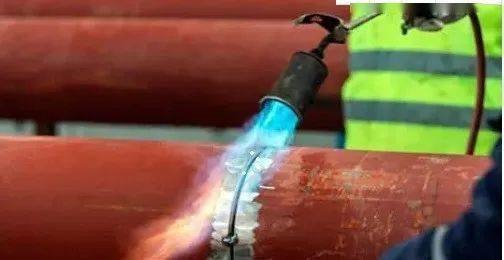Preheating Before Welding-Method to Prevent Welding Cracks
2024-03-23Leave a message
Preheating Before Welding - Method to Prevent Welding Cracks
Preheating before welding is a process of appropriately heating the local and overall parts of the workpiece before welding. Its purpose is to reduce the cooling rate of the weld joint, avoid the formation of hardened structures, and minimize welding stress and deformation. It is an effective method to prevent welding cracks.
The methods of preheating mainly include flame heating, furnace heating, and far-infrared heating. During preheating, surface-contact temperature gauges should be used to measure the temperature within a range of 30 to 50mm on both sides of the welding area.
Welding is one of the thermal processing methods of metals. Especially when welding ordinary low-alloy structural steel, thick plates with higher carbon content, the local metal undergoes various changes in structure due to the influence of the welding heat cycle of high-temperature heating and cooling, directly affecting the mechanical properties of the welded joint. Additionally, due to welding metallurgical conditions and the influence of different heating and cooling rates, the unevenness of the weld and the heat-affected zones structure will indirectly and directly affect the mechanical properties of the welded joint.
Therefore, it is essential during pre-welding, welding processes, and post-welding to alter or improve the mechanical properties of the welded joint by locally or entirely heating, insulating, and controlling the cooling rate of the workpiece.
Functions of Preheating Before Welding:
1) Preheating is an effective measure to prevent cold cracks, hot cracks, and the formation of hardened structures in the heat-affected zone. When welding high-carbon steel, low-alloy steel, heat-resistant steel, and components with high stiffness made of ordinary low-carbon steel, rapid cooling of the weld seam can easily lead to the formation of hardened structures in the weld and the heat-affected zone, thus causing cracks. Therefore, preheating of the workpiece is necessary. Preheating slows down the cooling rate, preventing cracks in the weld seam.
2) When welding large-constrained welding joints, rapid heating and cooling can generate shrinkage stress in the joint area, leading to cracks. Preheating the joint area before welding can reduce shrinkage stress and prevent crack formation.
3) When welding in low-temperature areas, preheating is necessary to prevent cracking, even if the thickness of low-carbon steel exceeds 20mm.
4) Preheating can also remove factors such as oil stains and moisture that affect the quality of the weld seam and promote the escape of hydrogen from the weld seam, thereby preventing the occurrence of defects such as pores and cracks.
Methods of Preheating Before Welding:
There are many methods of preheating, such as flame heating, medium-frequency induction heating, far-infrared heating, and furnace heating. Different preheating methods should be chosen according to the heating range. Currently, far-infrared heaters are widely used due to their excellent heating effect and large heating range. Generally, for preheating parts, the heating width on each side of the weld joint should not be less than five times the plate thickness, and a uniform heating zone of 75 to 100mm should be maintained on both sides of the groove.
Determination of Preheating Temperature Before Welding:
Preheating generally involves heating the steel within a range of 75 to 100mm on both sides of the groove to the required preheating temperature. This can be done using flame heating, medium-frequency induction heating, infrared heating, etc. The preheating temperature for low-carbon steel and ordinary low-alloy steel is 100 to 200°C. When determining the preheating temperature, the following points should be considered:
1) The weldability of the workpiece, mainly determined by the carbon content and alloy element content.
2) The thickness of the workpiece, the type of weld joint, and the degree of structural constraint.
3) The hydrogen content in the welding material.
4) Ambient temperature.
The preheating temperature for commonly used steels can be referred to in NB/T 47015-2011 "Welding Procedure Specification for Pressure Vessels."
Precautions for Preheating Before Welding:
1) For steel plates with poor weldability and large thickness, generally, when the joint is heavily constrained and conventional non-low hydrogen welding materials are used, preheating before welding is necessary.
2) For materials with high thermal conductivity (such as copper, aluminum, and their alloys), preheating before welding is required to ensure fusion between the weld metal and the base metal.
3) For carbon structural steel and low-alloy structural steel with good weldability, if the plate thickness is small, the constraint is not significant, and low-hydrogen welding materials are used, preheating is generally not required.
It is worth noting that preheating before welding increases energy consumption and worsens welding conditions. Therefore, whenever possible, welding without preheating or with low-temperature preheating should be adopted.


